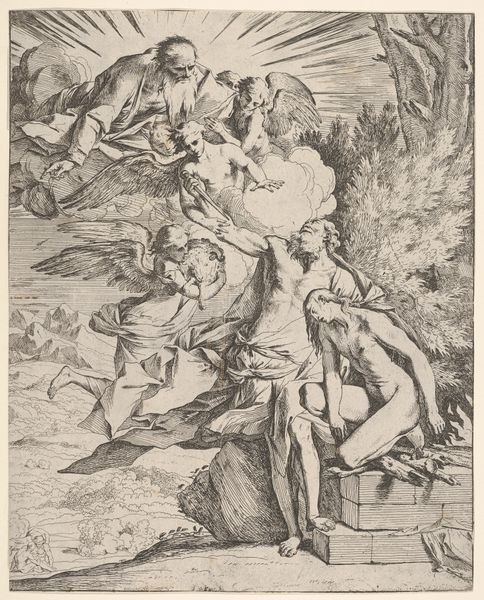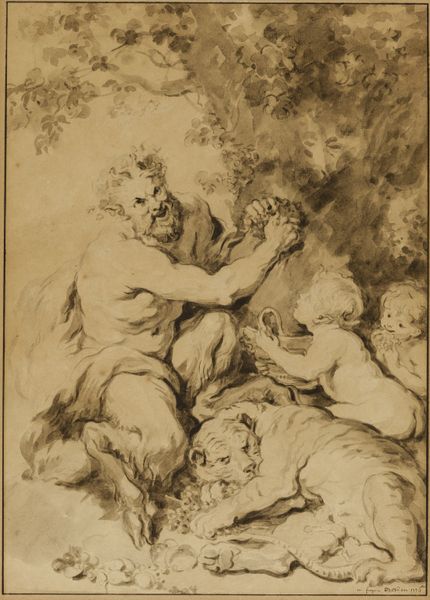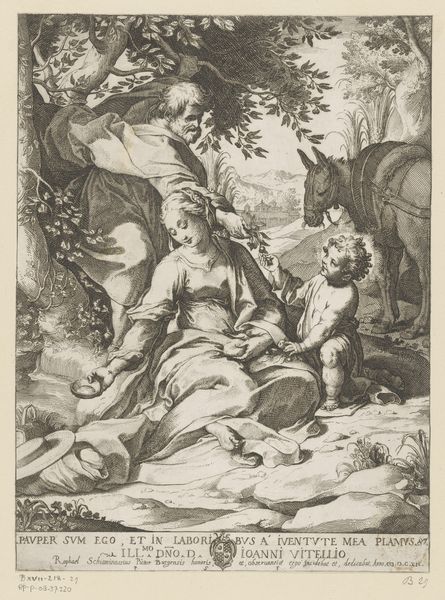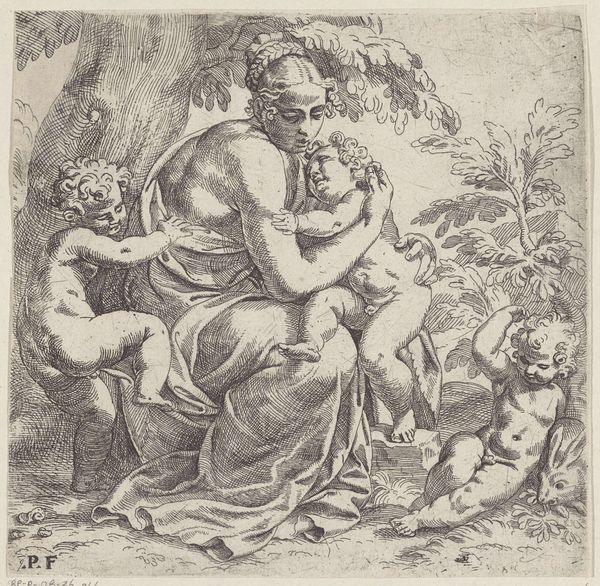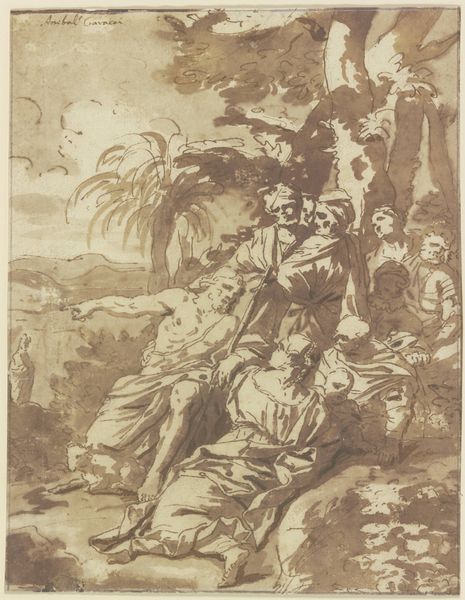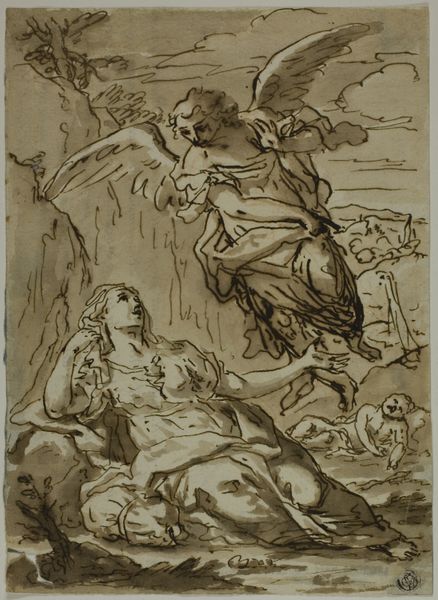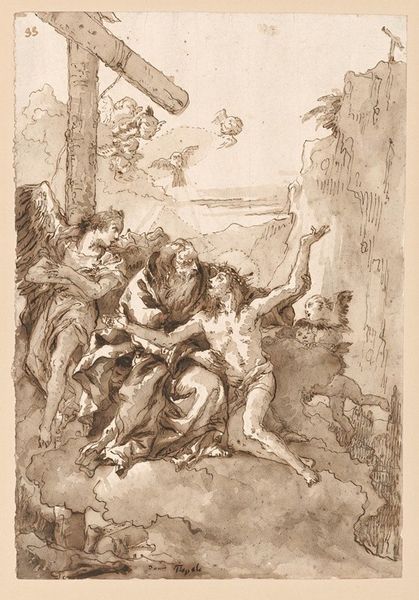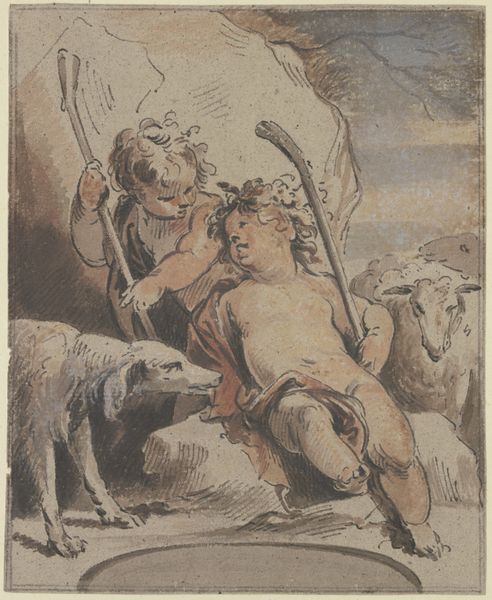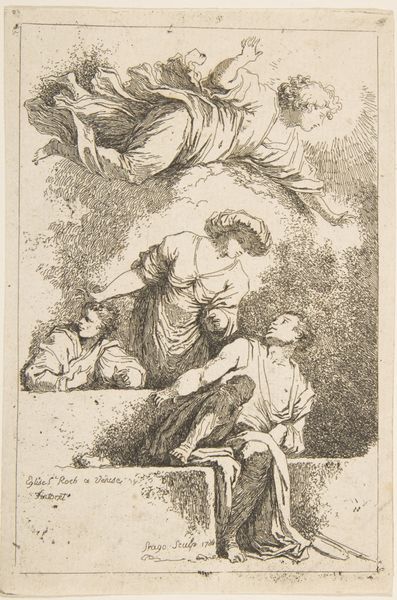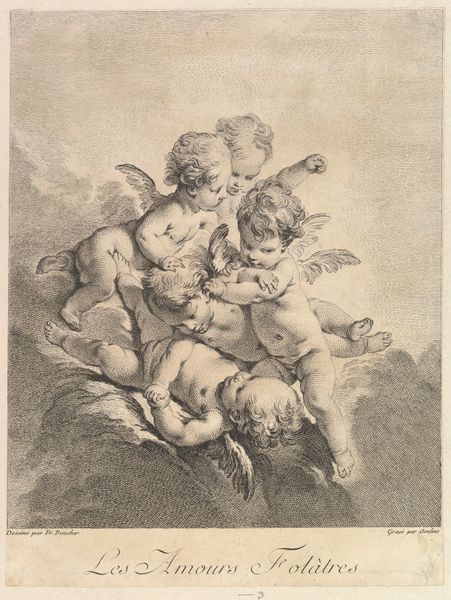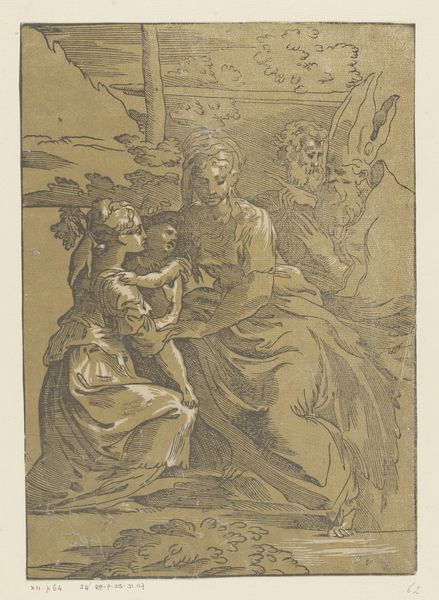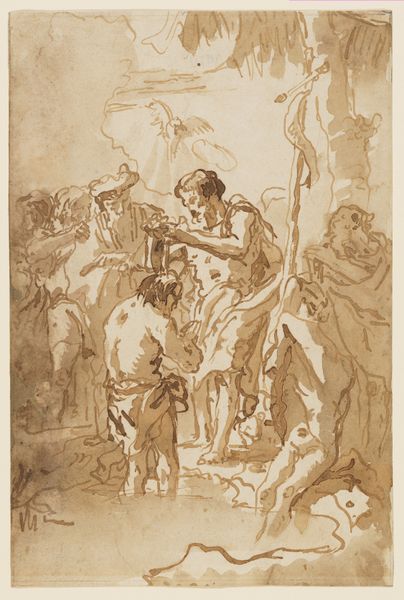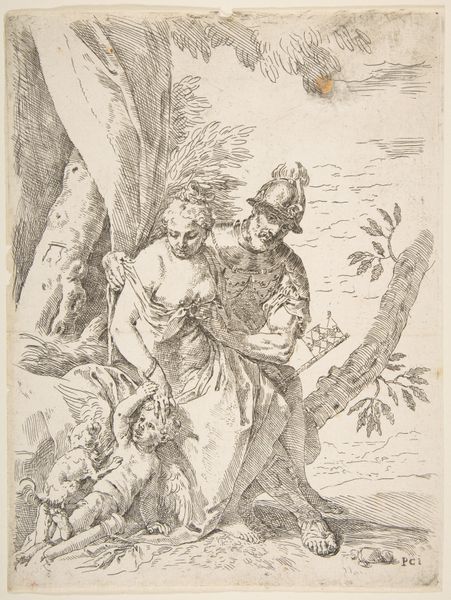
drawing, charcoal
#
drawing
#
narrative-art
#
baroque
#
landscape
#
charcoal drawing
#
figuration
#
charcoal
Dimensions: sheet: 28 × 24.5 cm (11 × 9 5/8 in.) mount: 40.6 × 32.4 cm (16 × 12 3/4 in.) framed: 60.96 × 45.72 cm (24 × 18 in.)
Copyright: National Gallery of Art: CC0 1.0
Curator: What a wonderfully intimate scene. Domenico Piola crafted this drawing, titled "A Satyr Entertaining His Family," around the 1690s, using charcoal. The sepia tones lend it a real warmth. Editor: It does feel warm, doesn't it? Almost overly so, perhaps… in a rather saccharine way? A mythological pastiche of domesticity. I'm drawn to the material fact of the charcoal, though, its ability to create such deep, velvety shadows. Curator: Piola was part of a flourishing artistic environment in Genoa, focused on draftsmanship, and he explored themes typical of the Baroque—narrative, figuration, even touches of landscape in the background here. Editor: Indeed, but I wonder about that ‘landscape’ designation. It's so clearly staged, designed to support and frame this... idealized scene. The satyr’s obviously the center—male figure making art for his docile family. I think we must consider its societal implications when it promotes retrograde notions about men and women. How does this affect its current interpretation? Curator: Perhaps! Though, look closely at how Piola manipulates the charcoal. See how he builds form with dense, almost sculptural strokes? There's a real emphasis on texture, on the sheer materiality of the medium itself. This object in our hands represents both fine art and an example of practical craftsmanship that's a record of artistic labour. Editor: I can't overlook the underlying structures. I'm intrigued how it intersects with constructions of gender and power in his time and ours. How did its commission—and his labor—intersect with social norms around performance of labor, especially within familial contexts? It's crucial that we examine whose stories are elevated. Curator: So true, yet here it seems so much a glimpse into his processes as much as cultural expectations. Still, it does open up so many interesting ideas to ponder... the material making the personal the political all at once! Editor: Yes. It offers fertile ground for discussions of visual rhetoric. That sepia wash, it hides, too, doesn’t it? It asks to examine. What does this moment, this creation of art from past values, truly create? A new story, perhaps.
Comments
No comments
Be the first to comment and join the conversation on the ultimate creative platform.
